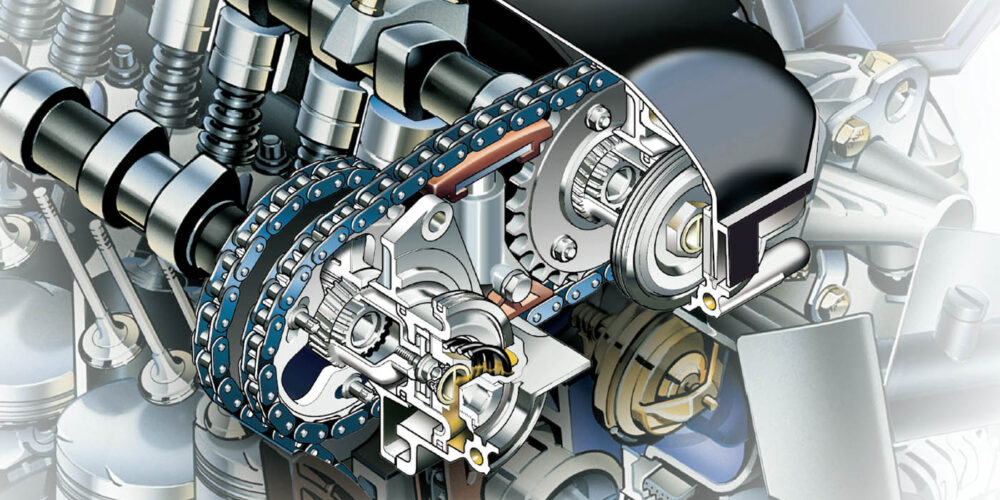Aftermarket wheel installation requires much more than just placing the wheel on the hub and tightening the lug nuts. It involves a great deal of knowledge and expertise that, admittedly, very few people have. Here is just one scenario that may help you avoid or diagnose a problem.
Case Study
A customer complains that his or her vehicle has a vibration, either while driving under normal conditions or possibly only when under hard braking.
Sounds like the tires need balancing or maybe a brake job, right? Not necessarily. This is how quickly a simple problem can be diagnosed incorrectly and then become a bigger problem.
To determine where we need to look, let’s ask a few questions:
When did the vibration begin to occur?
Was it after you or someone else installed custom wheels or performed some other work requiring the removal of the wheel, like for a CV axle replacement?
Does the vibration occur with the OE wheels installed?
If a set of aftermarket wheels were recently installed, the vibration could be coming from a couple of areas.
We can diagnose this with the following procedures:
Hub and Wheel Inspection:
Take a look at the mounting surface of the vehicle’s hub and the mounting pad of the wheel. Are they clean? Has surface rust built up on the hub or mounting pad? If so, remove it with a wire brush or abrasive pad. If the hub was painted recently, the wheel could have been installed prematurely, causing the paint to stick to the mounting pad.
This caused the wheel not to sit flush with the hub. It only takes the thickness of a business card to cause a vibration. Also, if the wheel is chrome plated, look to see if the chrome has started to peel off of the mounting pad. Again, thickness of the plating missing from one area could cause a vibration. Either repair or replace this wheel.
Obstructions
I’m still amazed at how many people don’t know to remove the Tinnerman clips from the vehicle when installing aftermarket wheels. You know these; they are on every vehicle and were necessary when the vehicle was being assembled. OE wheels are designed with a pocket in the mounting pad around the lug holes to accommodate these clips. Aftermarket wheels do not have these pockets.
Typically, there are only a few on each hub, sometimes only one or two. If you mount a custom wheel on a vehicle without removing these clips, the wheel won’t sit flush, creating a wobble. Left uncorrected, this can also lead to a false torque reading on the installation of the lug nuts and could cause the lugs to back off. In severe cases, I have seen the wheel develop a stress fracture between the lug hole and the centerbore. Any wheel found to have this condition should be repaired or replaced.
Wheel-to-Hub Fit
In the past, I have told you about step bores. You notice that the wheel is resting on the top of the vehicle’s hub. This is a common problem, so keep this one close at hand. The centerbore may not be deep enough to clear some tall hubs (red area), like those we have mentioned that come on many GM front-wheel-drive cars, especially those with 5×115 mm bolt patterns. If the wheel is installed without the driver noticing this condition, the result is similar to what you get with the Tinnerman clips – a wobble and vibration, with possible loosening of the lug nuts.
Lug Centric Wheels
Most vehicles with aftermarket wheels installed probably don’t have a set of centric rings installed. Centric rings are used to help center the wheel onto the hub so it fits like the OE wheel, which is hub centric. Many front-wheel-drive vehicles and some late-model, rear-wheel-drive sports sedans and SUVs are sensitive to small amounts of runout.
If proper installation procedures are not followed, the gap between the hub and centerbore can allow the wheel to be installed slightly off center. This creates a condition that may cause the vehicle itself to wobble at very slow speeds, say 10-15 mph. In some cases, the wobble is so subtle that the driver may not notice anything until the brakes are applied.
In most cases, when you don’t see any other mechanical cause to the vibration problem, install a centric ring and, if possible, a set of ET mag lug nuts. (Note: Not all wheels will accept ET mag lug nuts.) You will need to measure the centerbore diameter with a dial caliper to order the proper centric ring. Remember that 73 mm and 72.62 mm are both common diameters for centerbores. Also, if you don’t have a technical databook, ask your supplier to verify the diameter of the vehicle’s hub before buying the ring.








